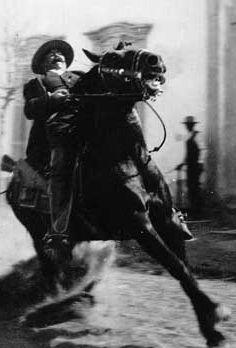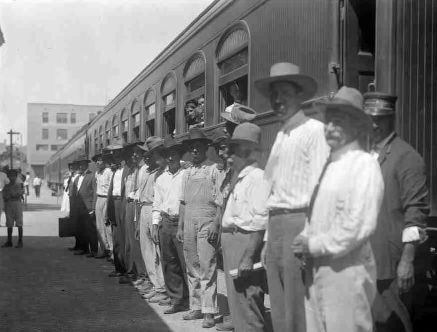
Publisher:
Bonnie King
CONTACT:
Newsroom@Salem-news.com
Advertising:
Adsales@Salem-news.com

~Truth~
~Justice~
~Peace~
TJP
Jun-09-2010 23:29

 TweetFollow @OregonNews
TweetFollow @OregonNews
Education News: The Mexican Revolution in El Paso
Kent Paterson Special to Salem-News.comAsked about parallels between the migrations of 100 years ago and today’s exodus from neighboring Ciudad Juarez, El Paso Prof. Keith Erekson, says specific causes of the dislocations might be different, the terror and trauma suffered by people are similar.
 A view into El Paso, from Juarez. Courtesy: sott.net |
(LAS CRUCES, N.M.) - The role of the Texas border city of El Paso remains one of the little-known stories of the revolutionary upheaval that erupted in Mexico in 1910. The US city on the Rio Grande was a vital center for many of the plots, intrigues, advances and retreats of different political factions vying for power in Mexico.
Future president and opposition leader Francisco Madero maintained a base in El Paso. Supporters of dictator Porfirio Diaz found refuge in the stately homes of now-trendy Sunset Heights. The feet of Pancho Villa touched the ground of El Chuco, as El Paso is sometimes colloquially called.
“A lot of the activities were planned, organized and orchestrated here in El Paso,” said Keith Erekson, director of the Center for History Teaching and Learning (CHTL) at the University of Texas at El Paso. As Mexico marks the 100th anniversary of her revolution, it’s fitting then that Erekson and his colleagues are sponsoring a teachers’ institute later this month in El Paso aimed at studying, exploring and reliving the Mexican Revolution.
Scheduled for June 24-26, the three-day event will include lectures, interactive exercises and even a walking tour of historical sites led by local author and historian David Romo.
 Pancho Villa lived hard and rode fast. |
According to Erekson, lectures on different dimensions of the Revolution, including how it affected ordinary Mexicans on a daily basis, will be given by UTEP history professors Yolanda Leyva and Sam Brunk. Mark Anderson, professor of history at the University of Regina in Canada, will also be on hand to talk about Pancho Villa and the media, Erekson told Frontera NorteSur.
A cross-curricular, multi-disciplinary approach will characterize the teachers’ institute, Erekson said. “We’re inviting all K-12 educators,” he added. All sessions and materials for teachers are free of charge. The program is underwritten by Texas Humanities, UTEP’s Teachers for a New Era and the Sid W. Richardson Foundation.
In addition to helping commemorate the 1910 Centennial, the El Paso teachers’ institute comes at another important juncture: Texas’ state board of education recently approved a new public school curriculum after rancorous debate.
Reviewing a draft version of the curriculum circulated for public comment last April, Erekson said he noticed a “huge oversight” in the lack of attention paid to Mexico and Mexican-Americans, a country and a people instrumental in the history and development of the Lone Star State.
An important contribution of the teacher’s institute, Erekson contended, will be to give educators essential tools to create a more grounded and richer learning experience.
“One of the presentations is going to be on putting the Revolution back in the texts.” Erekson said. “We want to integrate Mexico into the curriculum, not add it.”
 Mass exodus during Mexico Revolution in 1910. Courtesy: PBS.org |
The UTEP history teacher said El Paso was a sanctuary for people fleeing the 1910 Revolution, even hosting mass influxes of refugees like the 4,000 Mormons who arrived in 1912 and another group of 10,000 people which was housed at Ft. Bliss.
Asked about parallels between the migrations of 100 years ago and today’s exodus from neighboring Ciudad Juarez, in which tens of thousands of people have fled criminal violence for the safety of El Paso, Erekson agreed that while the specific causes of the dislocations might be different, the terror and trauma suffered by people are similar.
The June 24-26 teachers’ institute is part of a series of activities commemorating the Mexican Revolution planned for El Paso during 2010 and 2011.
The CHTL sessions will be held at the El Paso Museum of History and the El Paso Public Library’s main branch.
For more information on the summer teachers’ institute, interested persons can go to utep.edu/chtl or send an e-mail to chtl@utep.edu
- Frontera NorteSur (FNS): on-line, U.S.-Mexico border news
- Center for Latin American and Border Studies
- New Mexico State University
- Las Cruces, New Mexico
Articles for June 8, 2010 | Articles for June 9, 2010 | Articles for June 10, 2010


googlec507860f6901db00.html



Terms of Service | Privacy Policy
All comments and messages are approved by people and self promotional links or unacceptable comments are denied.
[Return to Top]
©2026 Salem-News.com. All opinions expressed in this article are those of the author and do not necessarily reflect those of Salem-News.com.